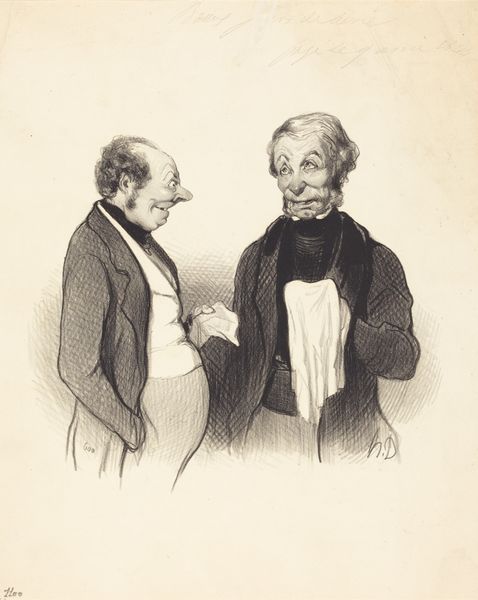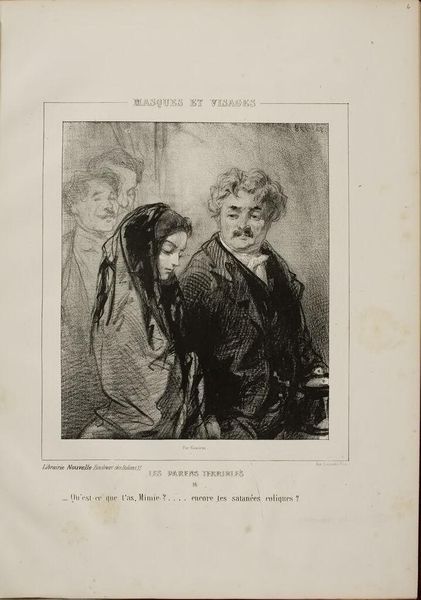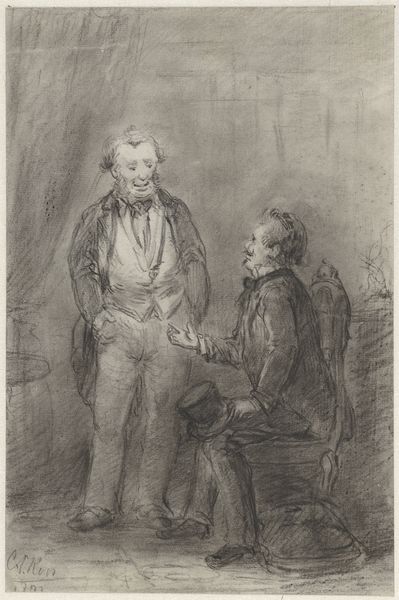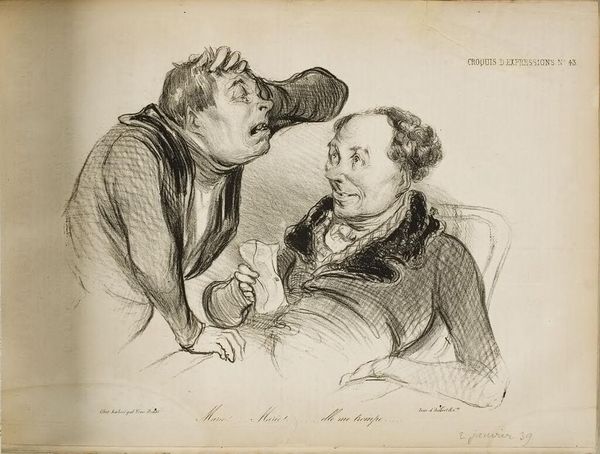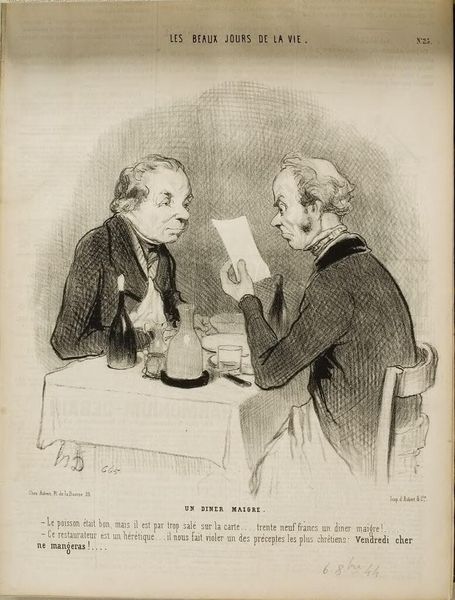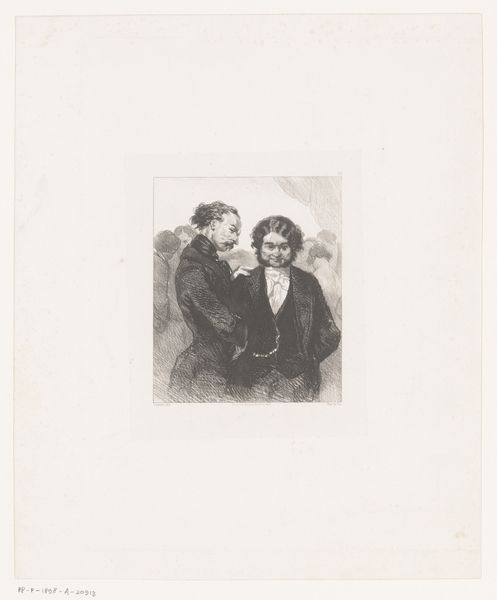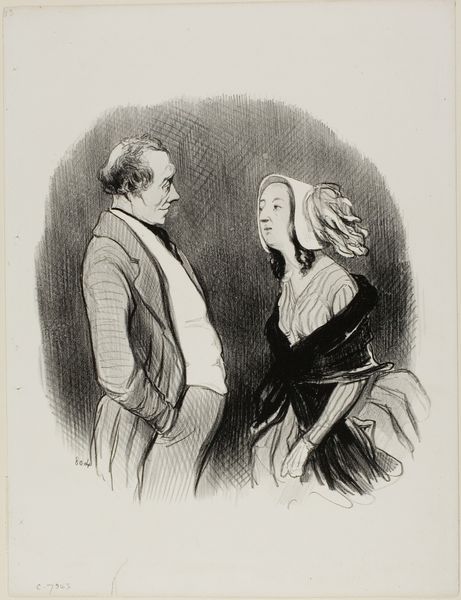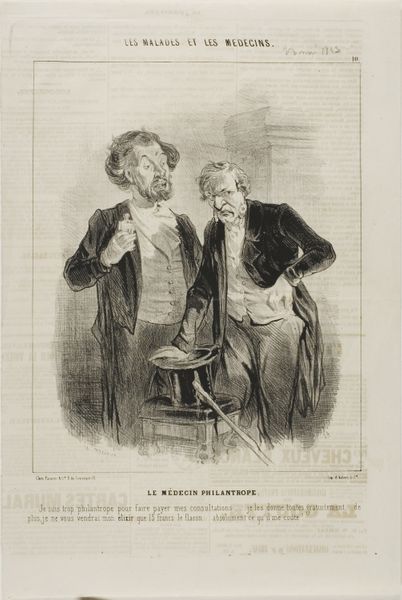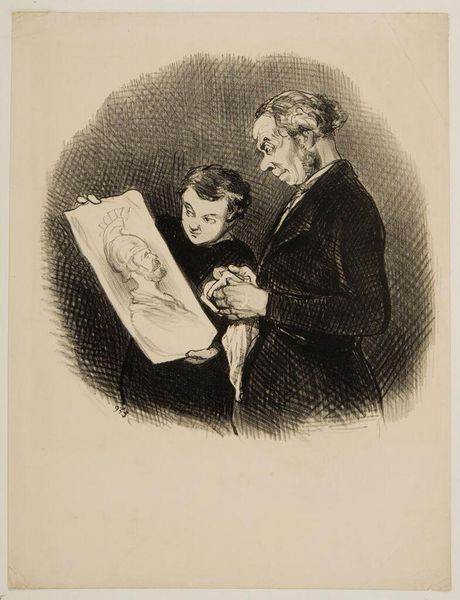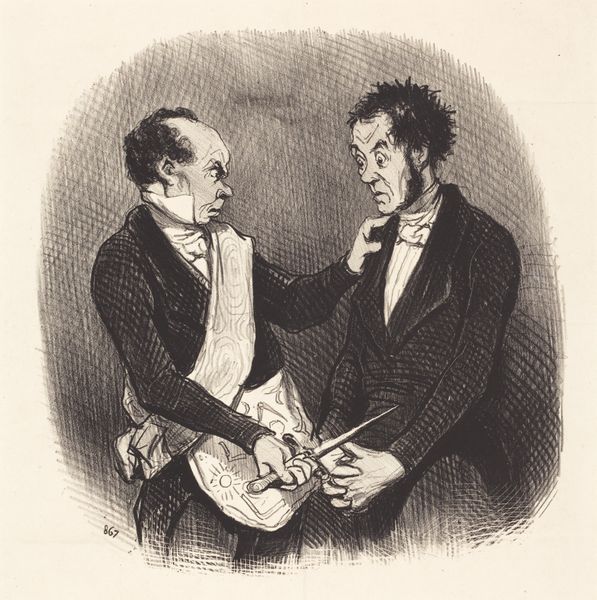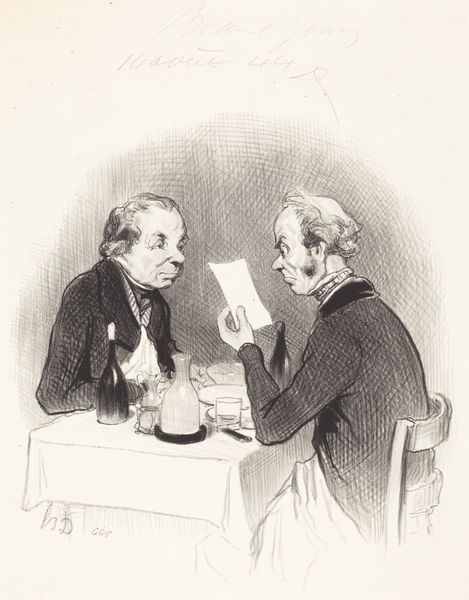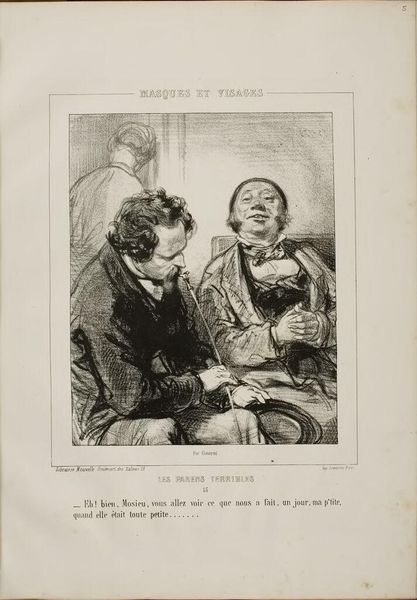
photogravure, print, photography, gelatin-silver-print
#
portrait
#
photogravure
#
portrait
# print
#
photography
#
romanticism
#
gelatin-silver-print
Dimensions: 8 3/8 x 6 1/4 in. (21.27 x 15.88 cm) (image)
Copyright: No Copyright - United States
Curator: This remarkable photogravure is "Handyside Ritchie and Wm. Henning," created around the 19th century. David Octavius Hill, a pioneer in photography, is credited with its making. I always get the sense of deep kinship whenever I look at this work. Editor: My first thought is of Rembrandt—the dark tonality, the way the light catches on the older man’s hair, almost saintly. There’s a definite feeling of wisdom being passed down, even though they are presented together in the composition. The one in the back almost protectively overlooking. Curator: Hill used photography in a painterly manner, and there is an underlying psychological depth in how he framed his portraits. This might explain your reading of Rembrandt. Notice the elder figure. It has a symbolic weight that echoes throughout artistic portrayals of philosophers. The fact that Henning is holding some kind of scepter is a telling symbol. Editor: That is intriguing; I saw the object the seated figure is holding merely as a walking stick, but now I see it—it’s a scepter, a marker of authority. The portrait has that quality of Romanticism. The figures emerging from darkness... Is it Ritchie deferring to Henning's wisdom or questioning it, staring in a different direction, away from Henning? I am intrigued by Ritchie’s posture. Curator: Exactly! It raises more questions than it answers. Ritchie looks concerned, like the world weighs heavily on his mind. Together, this duality speaks to the complexities of progress and tradition that were prevalent at the time this photogravure was crafted. Editor: I find myself meditating on the impermanence that photography suggests. Even now, we project meanings and narratives onto their likeness, as an art form, but also simply as visual relics. Curator: Photography freezes time. And looking at the image, one almost has the sense that even in that frozen moment, something vital—a story, a perspective—escapes us, yet is eternally available. I keep coming back to look again to catch whatever wisp of feeling I missed.
Comments
No comments
Be the first to comment and join the conversation on the ultimate creative platform.
